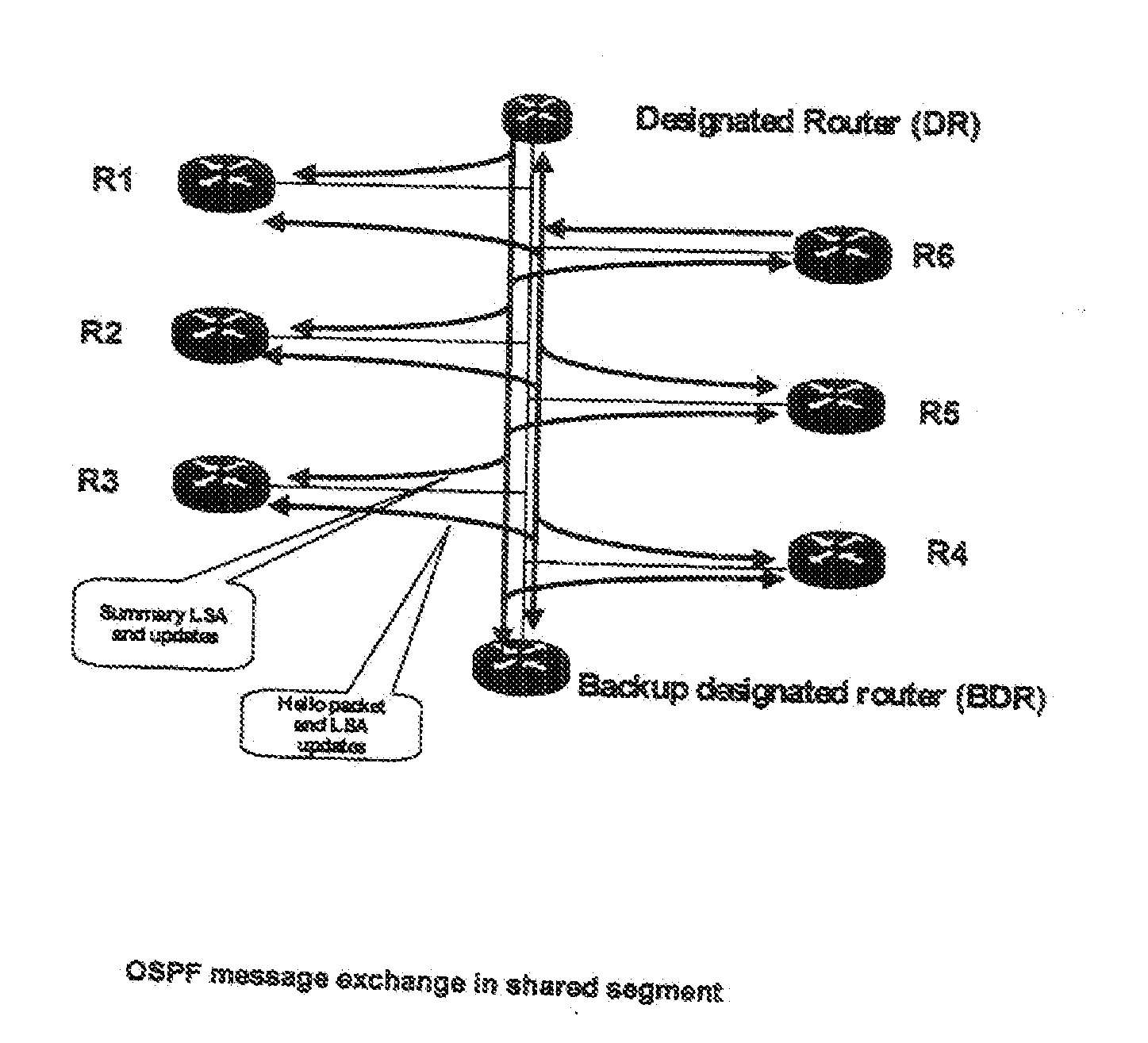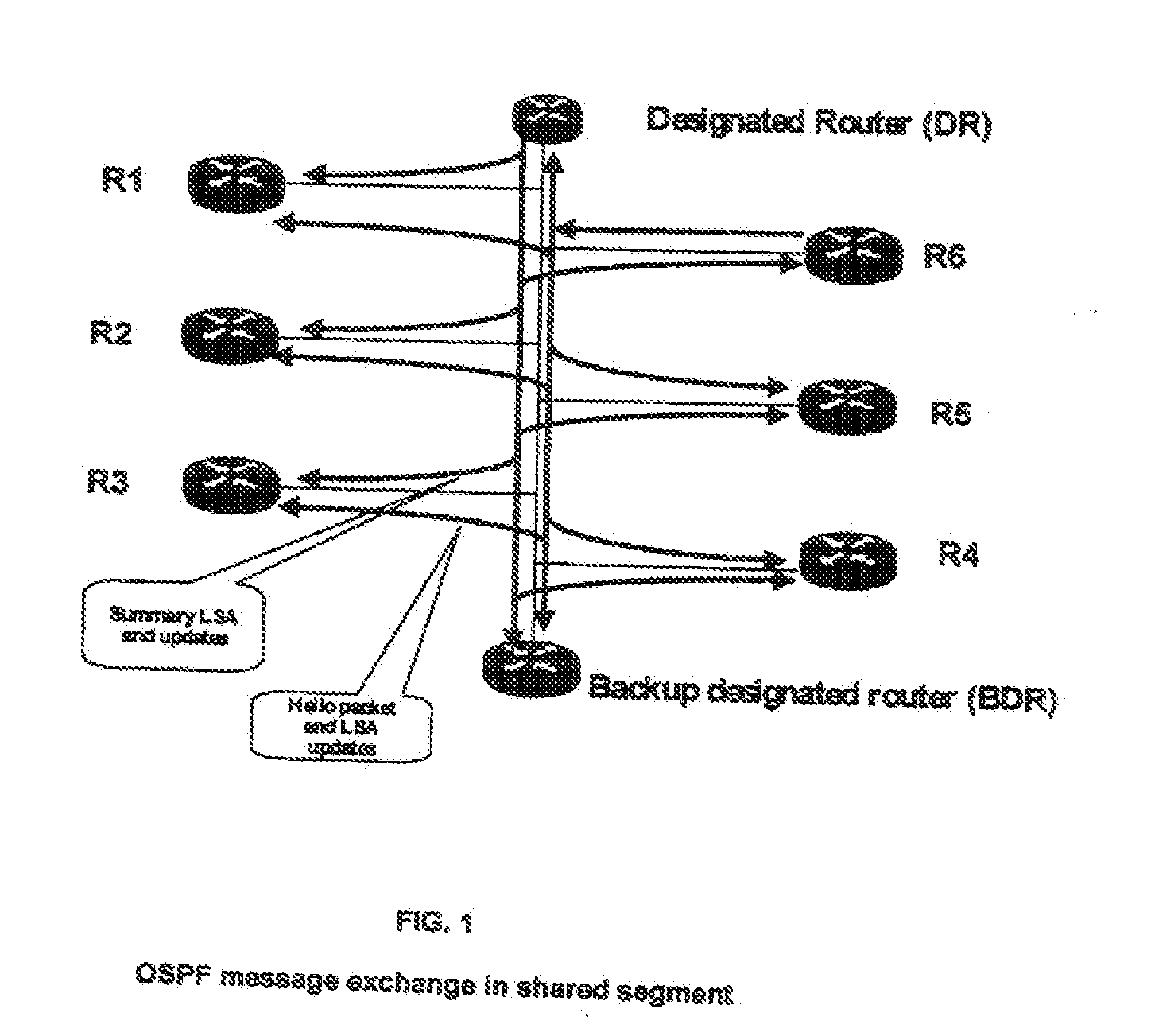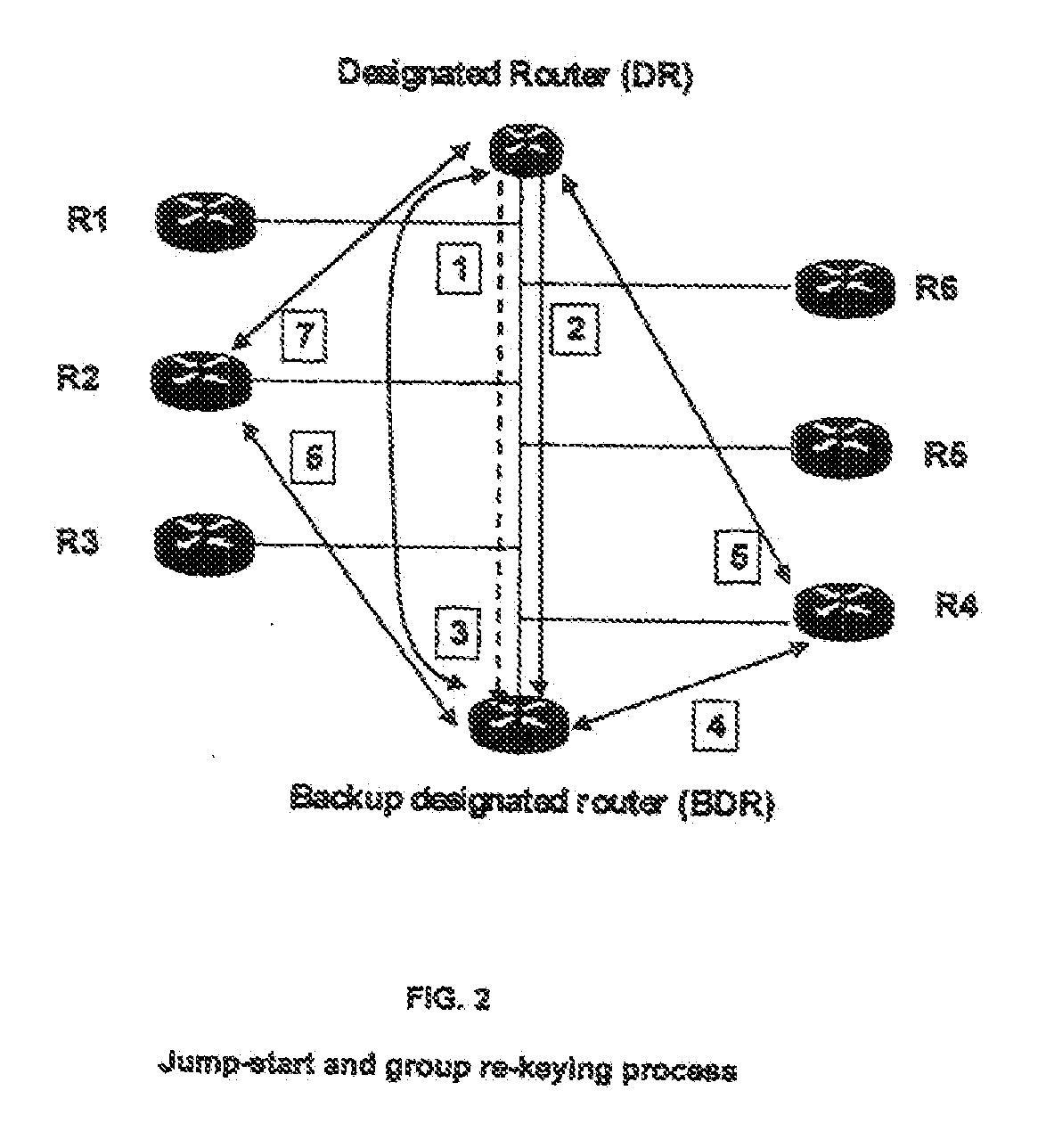System and method for nodes communicating in a shared network segment
a technology of shared network segment and communication system, which is applied in the direction of digital transmission, data switching network, electrical equipment, etc., can solve the problems of not being widely used, no automatic re-keying, and no routing protocol designed with inbuilt security mechanism
- Summary
- Abstract
- Description
- Claims
- Application Information
AI Technical Summary
Benefits of technology
Problems solved by technology
Method used
Image
Examples
Embodiment Construction
[0026]Embodiments of the invention provide a system and method allowing to break live lock and being able to support group keying and re-keying in routing systems of communication systems and networks, in particular IP based networks.
[0027]Embodiments of the invention solve problems especially with regard to security problems such as group keying and multicast security. Further, these or other embodiments of the invention address the group keying and re-keying issues related to routing protocol infrastructure namely OSPF.
[0028]In more detail, the invention supports and provides a means and function to perform a jump-start for identifying the legitimate nodes that are willing to participate in group communication. The invention also supports and provides a mechanism and function to distribute the group-keys during a re-keying process. The invention further supports and provides a mechanism and function enabling nodes(s) to distribute and synchronize themselves during the re-keying pr...
PUM
 Login to View More
Login to View More Abstract
Description
Claims
Application Information
 Login to View More
Login to View More - R&D
- Intellectual Property
- Life Sciences
- Materials
- Tech Scout
- Unparalleled Data Quality
- Higher Quality Content
- 60% Fewer Hallucinations
Browse by: Latest US Patents, China's latest patents, Technical Efficacy Thesaurus, Application Domain, Technology Topic, Popular Technical Reports.
© 2025 PatSnap. All rights reserved.Legal|Privacy policy|Modern Slavery Act Transparency Statement|Sitemap|About US| Contact US: help@patsnap.com



